# Hand2Note Live Poker Database
What if you could see everyone’s cards at the table? Sounds like a fantasy, right? But with Hand2Note’s Live Poker Database, that fantasy becomes a reality. I’m not exaggerating.
Table of Contents:
What is Live Hand2Note Live Poker Database?
1. Guess player hands in Hand2Note replayer.
2. Train your tells reading skills.
3. Study ranges — not just single hands.
4. Advanced: Explore Ranges in Multi-Player Reports
# What is Hand2Note Live Poker Database?
Live Poker Database is a database of live poker hands. We took thousands of poker streams from YouTube and turned them into over 600,000 hand histories. Then we put them all into one database, which you can now use in Hand2Note — the most powerful poker analytics app.




These streams show every hole card — yes, even the preflop folds. Hand2Note captures it all in the replayer, as you can see in the screenshot. Ever wanted to know what others fold? Now you can!
As of June 2025 the database includes:
- 600k+ hands with all cards revealed, including folds.
- 25k players: 7k cash and 17k tournament players.
- 4 games: Texas Hold’em, Omaha, Omaha Five Cards, Shortdeck.
- 18 channels: Hustler Casino, Poker At The Lodge, Kings Resort, and others.
# How to Use Live Poker Database
Let’s say you have a live poker tournament series or a cash game coming up next week. Maybe you’re a regular player, or maybe you’re coming back after a break — either way, you want to get ready. Below, I’ll show you how to use the database to prepare for your next live session.
# 1. Guess player hands in Hand2Note replayer.
Pros are great at hand reading because they’ve seen thousands of showdowns over the years. With the Hand2Note Live Database, you can speed that up — guess, check, repeat.
First, open the Hand2Note replayer.
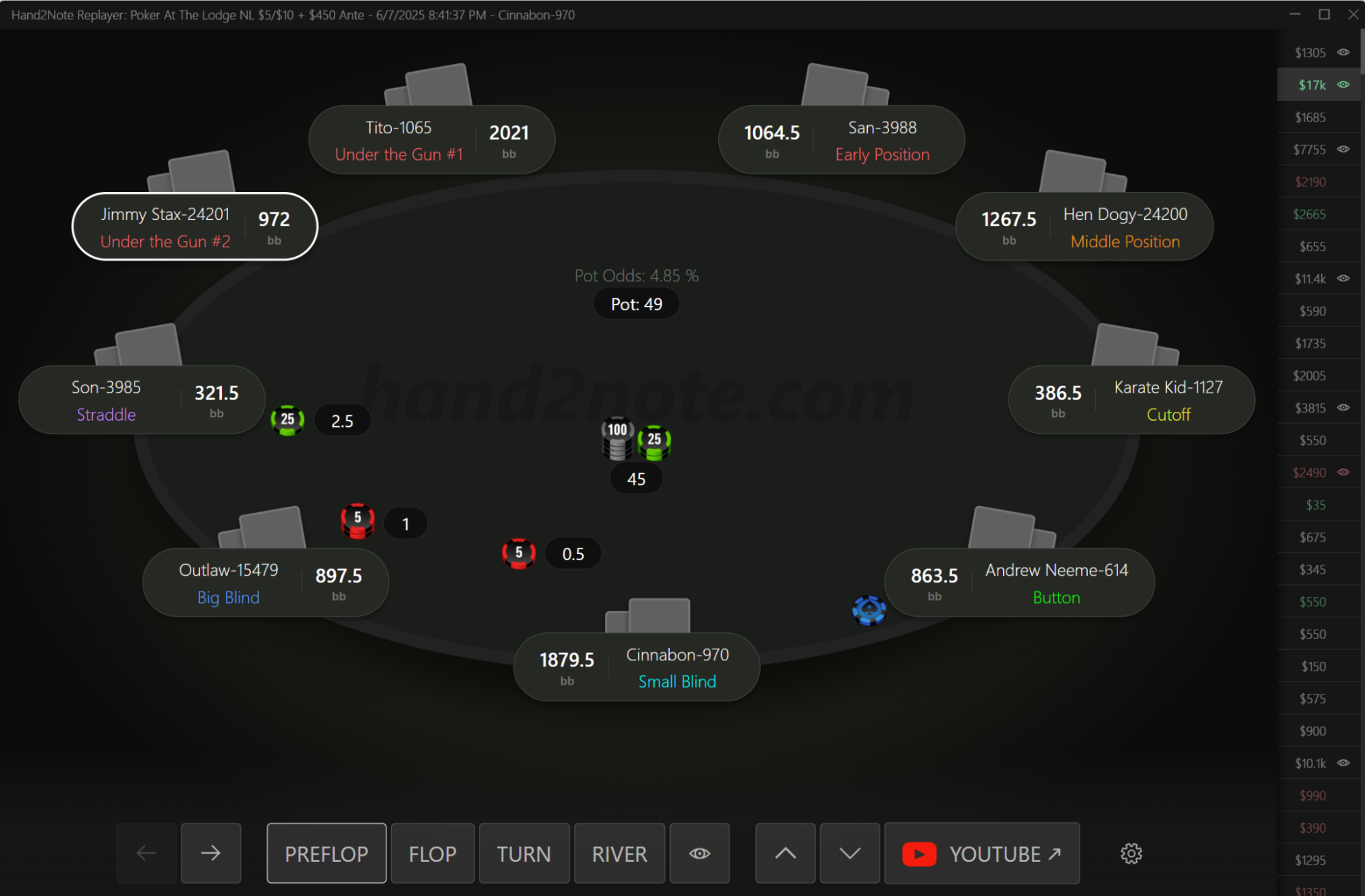
Then, go through the hand, action by action. Try to guess each player’s cards as the hand plays out.
In this hand, the player ‘Cinnabon’ made a huge 50bb raise preflop. What do you think he has? What about the limpers?
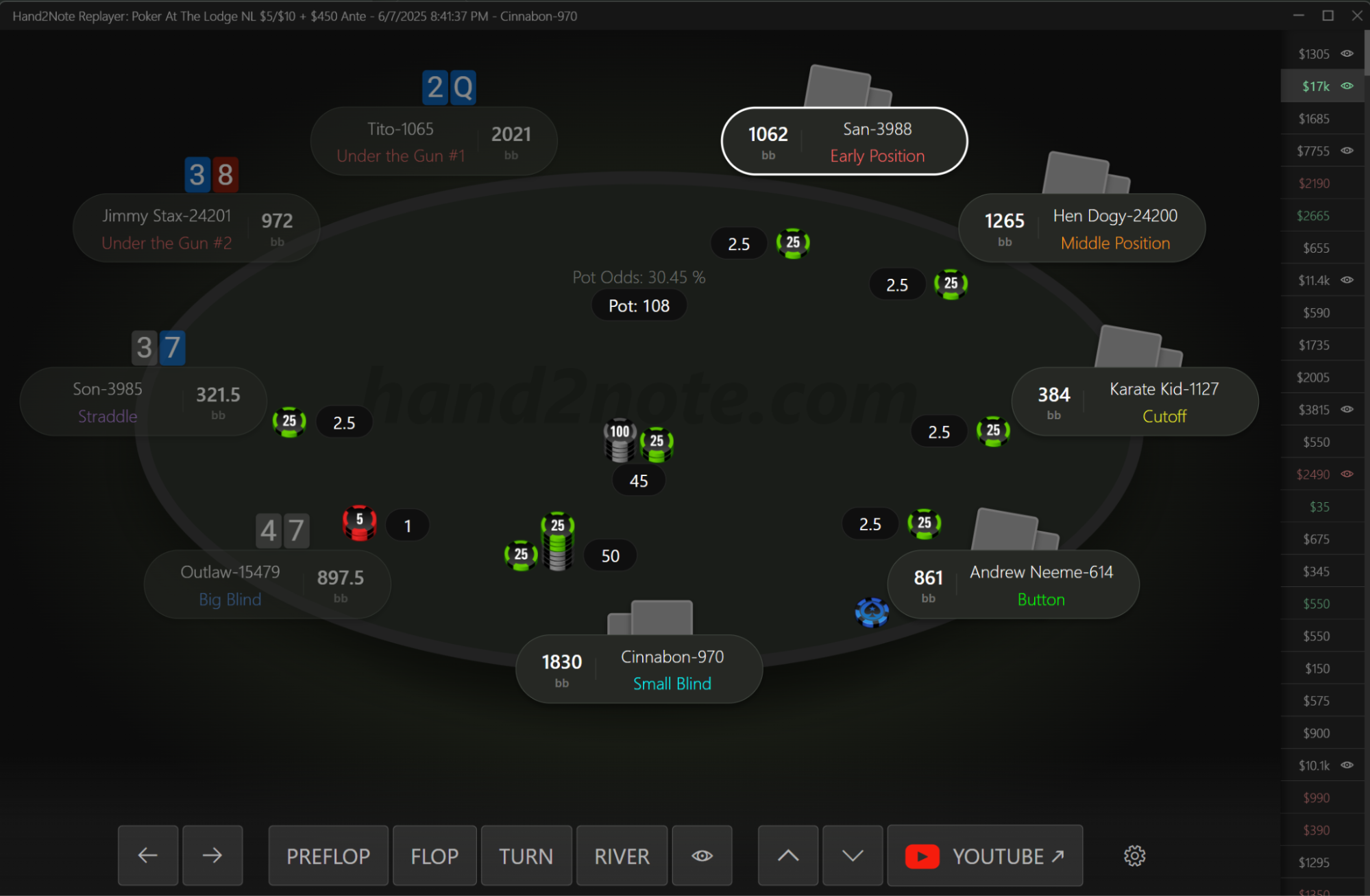
Eventually, the player ‘San’ made a 600bb overbet on a blank river. What do you think he has? Could it be a bluff? Remember this guy. We’ll talk about San a lot in this article.
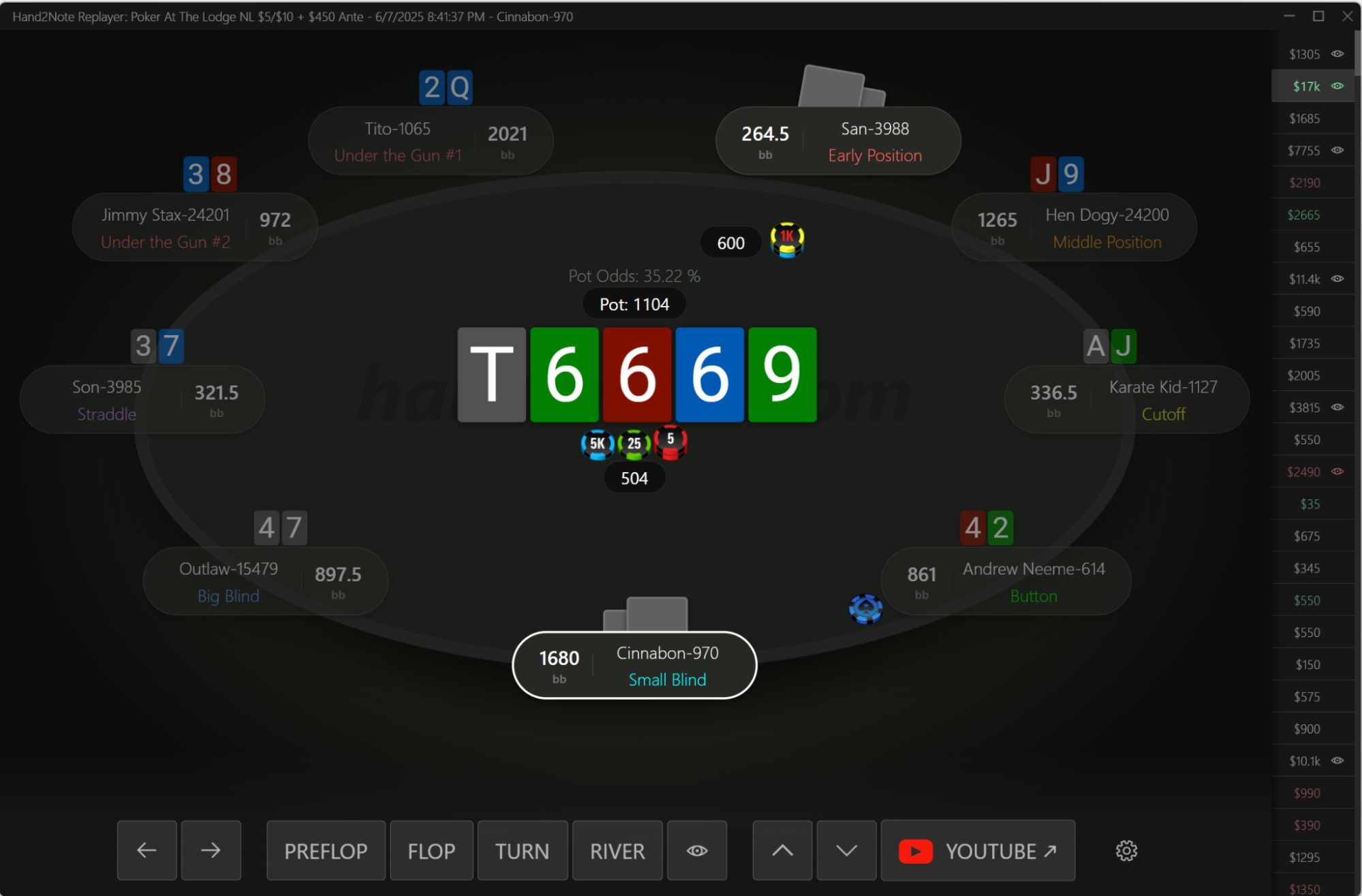
Finally, reveal the cards to see how close your guess was. ‘San’ was actually bluffing, and Cinnabon caught him with an AK high. The pot was 1700 bbs!
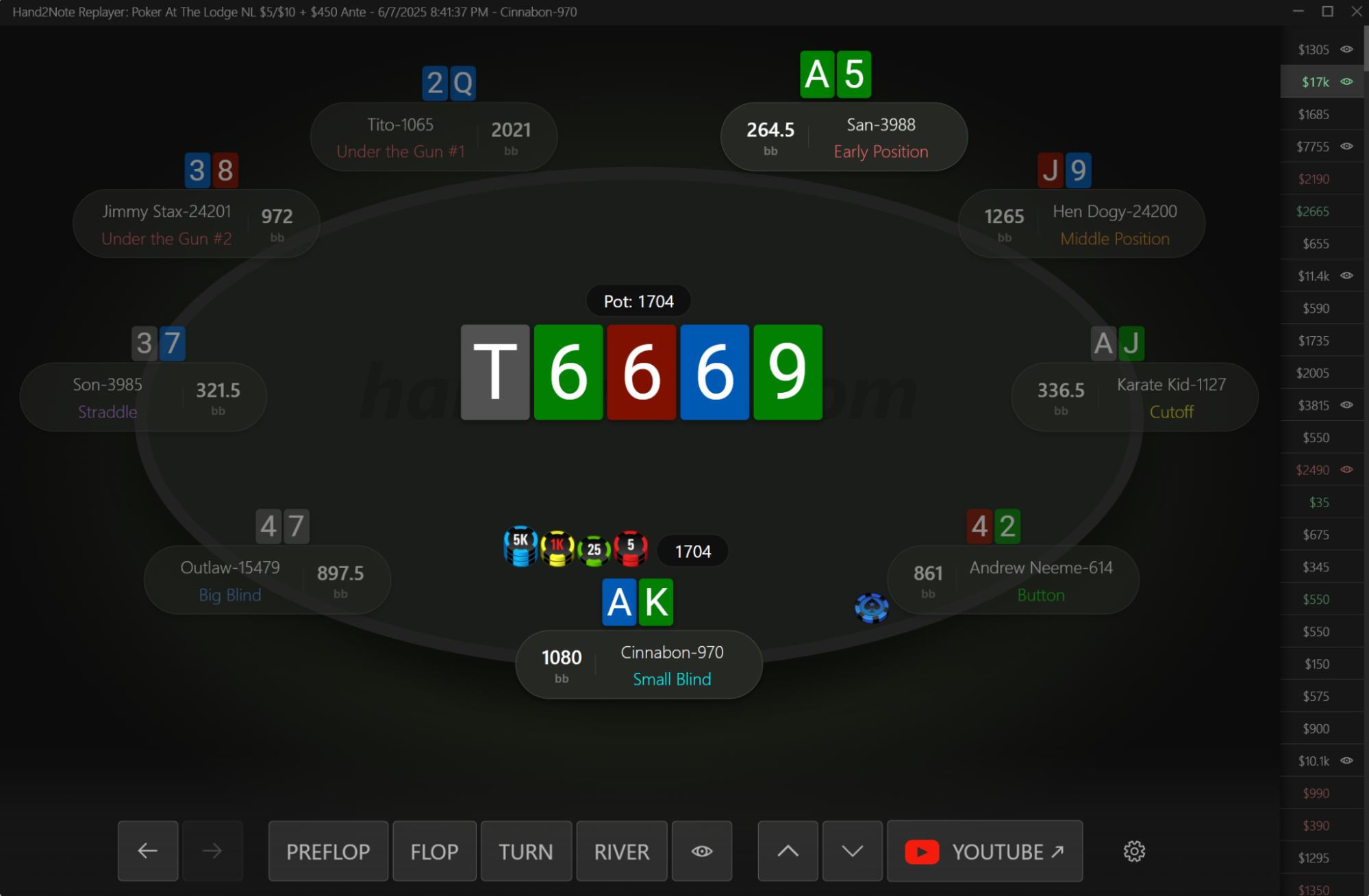
Btw, one of the limpers had AJ — did you expect that?
Why is this better than watching a YouTube stream?
Watching live poker streams has two big drawbacks:
1. Moving between actions in a hand is slow and clunky on YouTube.
2. The video shows all hole cards from the beginning of a hand, so you can’t test your reads.
Reviewing hands in Hand2Note is fast, and since the cards stay hidden until you make your guess, you can actually train your hand-reading skills.
# 2. Train your tells reading skills
Live poker gives you way more information than online — like tells: timing, hesitation, overconfidence, eye movement, hand shaking, and more. Reading tells usually takes years of live experience. But not anymore. With Hand2Note, you can practice reading tells from home.
Hand2Note replayer includes a link to a YouTube video of every hand. Take a look at the live moment of the hand above:
In the video, San made the 600bb bluff almost instantly — without much thought. That could be a common tell: strong is weak, weak is strong — players often act confident when they’re bluffing, and unsure when they’re strong. I’m not saying he always bluffs fast and value bets slow, but it’s possible.
Here’s the thing — we have 2,000 hands on San, all with hole cards revealed. In 28 of them, he makes a 200bb+ river bet. You can study his tells in each one. If there’s a pattern, you’ll spot it.
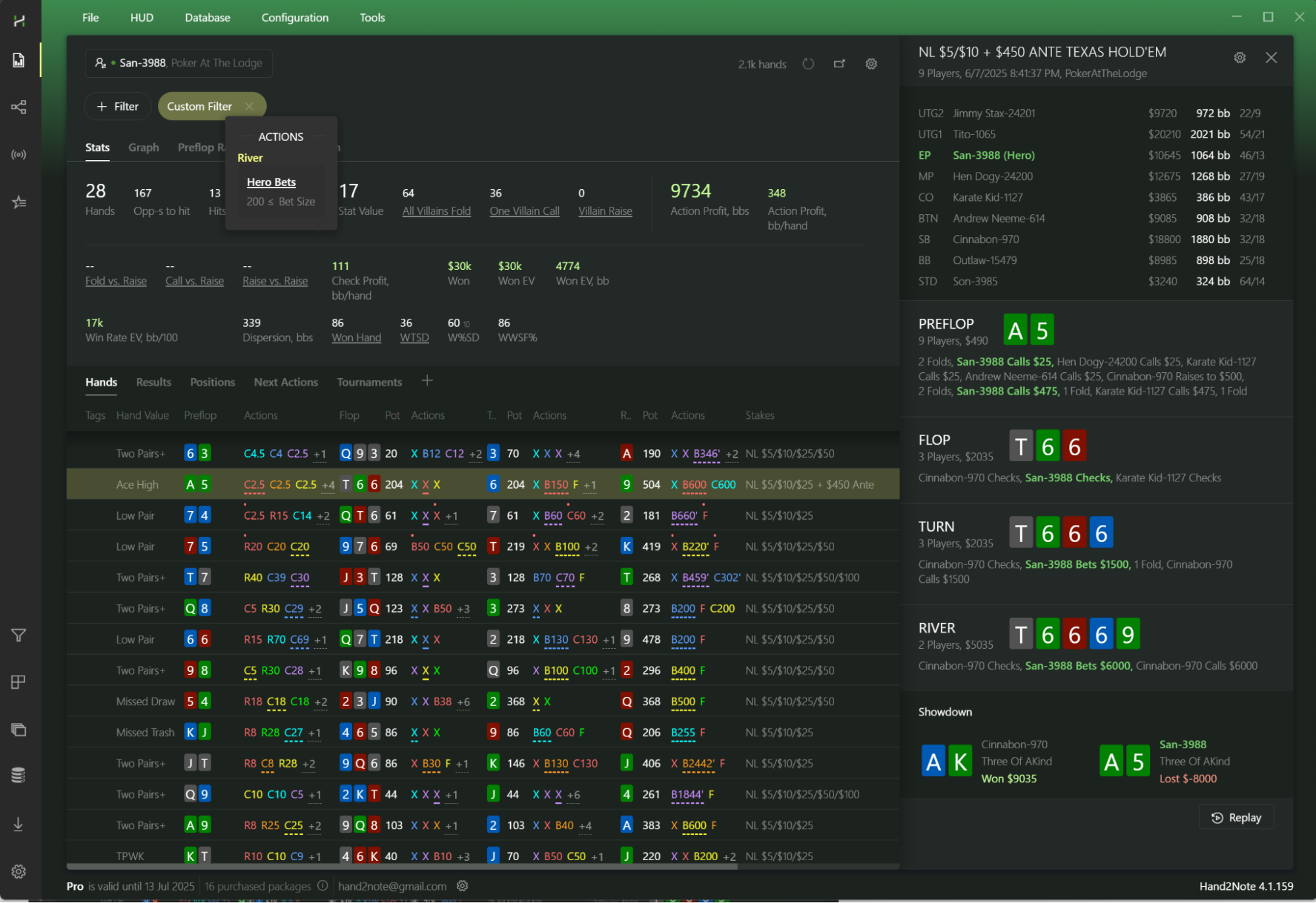
# 3. Study ranges — not just single hands
Hand2Note isn’t just a hand replayer. It’s the most powerful analytical tool designed to go far beyond basic review.
First, the HUD gives you a basic understanding of the actual player's stats.
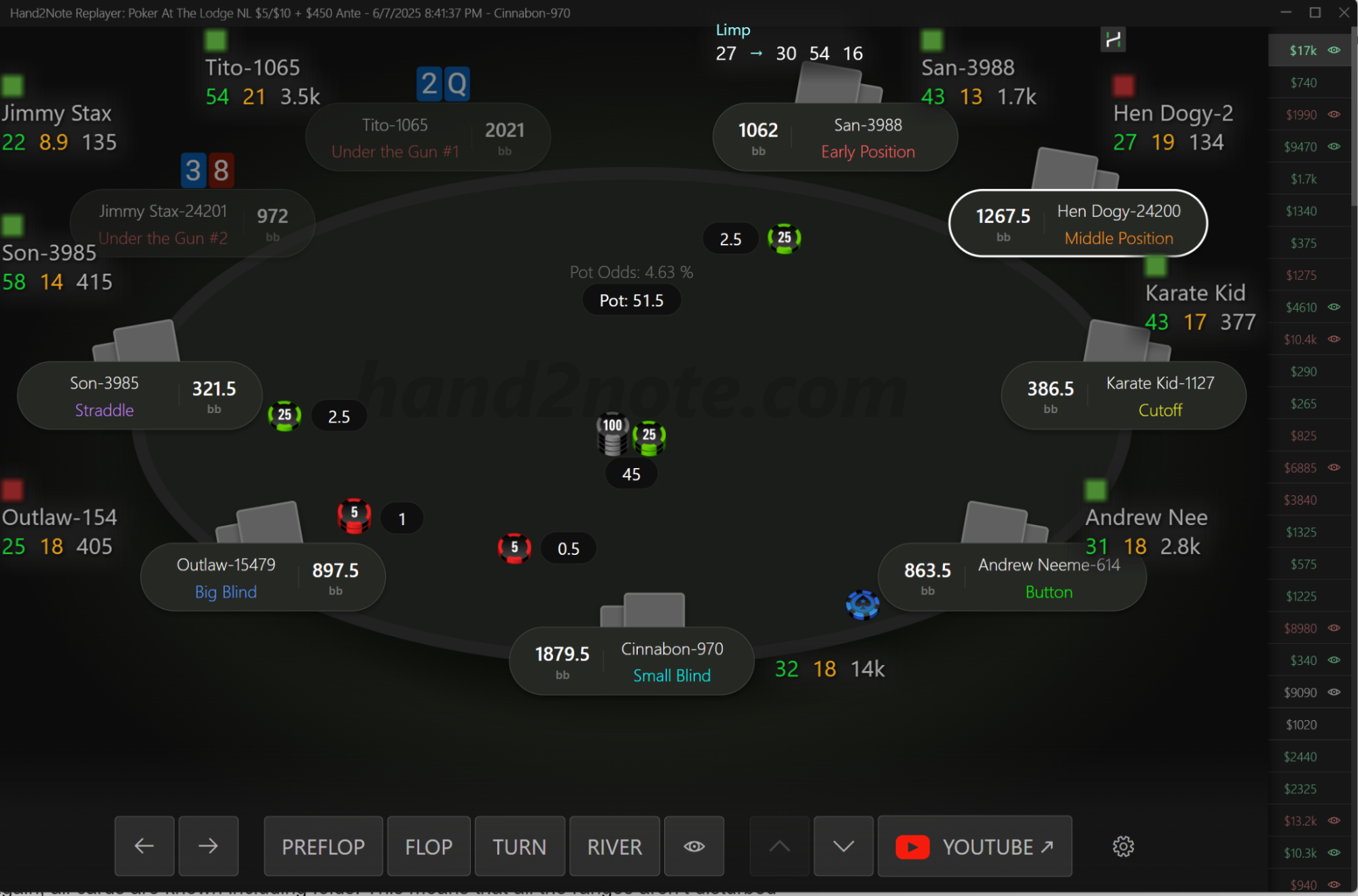
Second, the HUD is dynamic. It brings the relevant stats up depending on the current spot. Notice how Hand2Note shows Limp stats for San.

That means San-3988 limps 27% of the time, and then he folds 30%, calls 54%, and reraises 16%.
Third, go deeper — see the real ranges behind the action. Hover over a Limp stat in the HUD to see San’s full limp range. It gives you much more insight into his actual strategy than any single hand could.

Look at his limp range above — he limps strong hands like AA, AK, AQ, and QQ. But don’t be mistaken. His raise range below also includes strong hands. With strong hands preflop, he limps about 75% of the time and raises 25%. Compare his raise vs. limp range below:
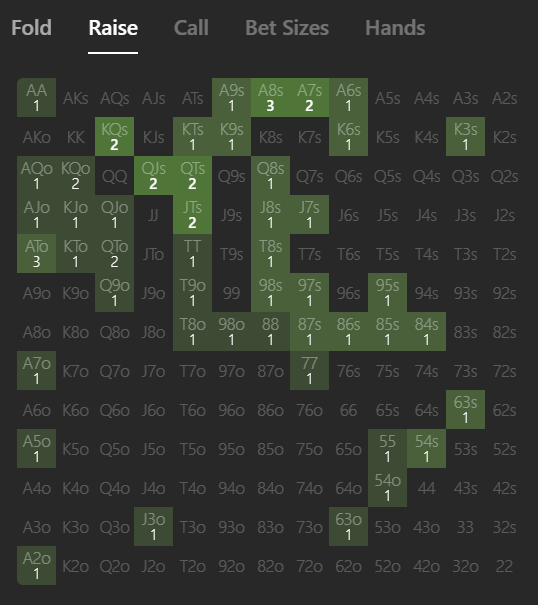 San's Open Raise range
San's Open Raise range
 San's Limp Range
San's Limp Range
# 4. Advanced: Explore Ranges in Multi-Player Reports
A small sample is a common problem when analyzing preflop and postflop ranges. Hand2Note solves it with Multi-Player Reports.
For example, let’s see which hands strong players open-raise by position. Strong players have a VPIP around 33/20 and a win rate of over 10 big blinds per 100 hands.
Go to the Statistics tab, open the Player dialog, switch to the Multiple Players tab, and apply the following filter:
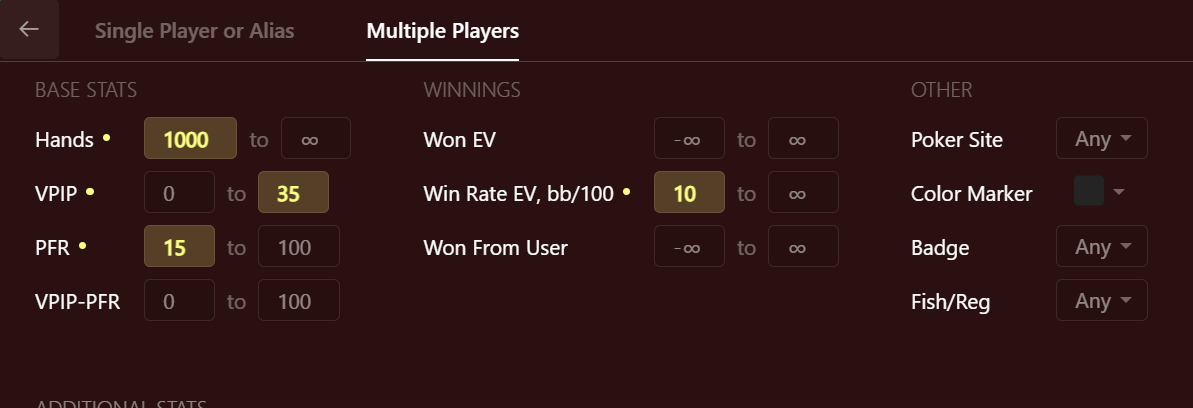
Hand2Note found 71 such players. Their combined open-raise range from different positions:
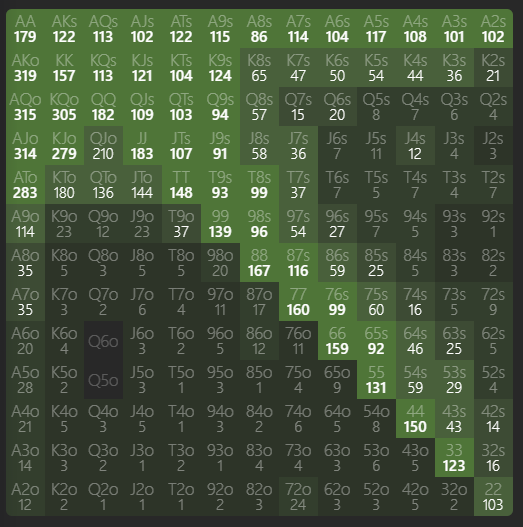 Early Position
Early Position
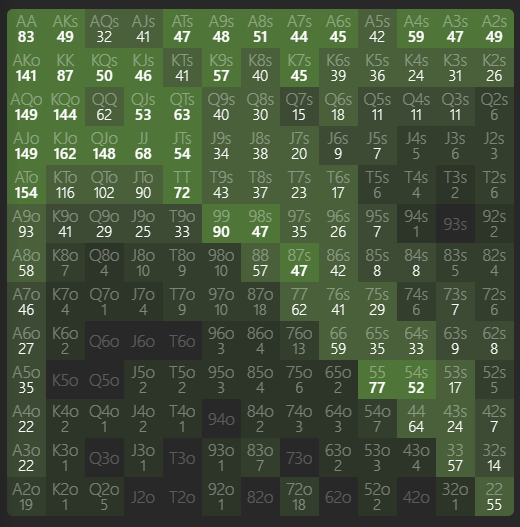 Middle Position
Middle Position
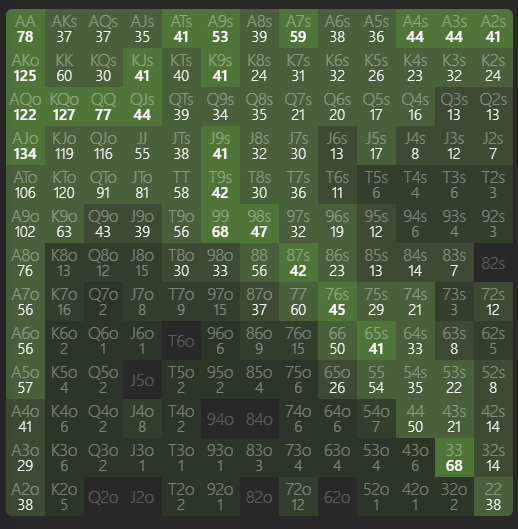 Cutoff Position
Cutoff Position
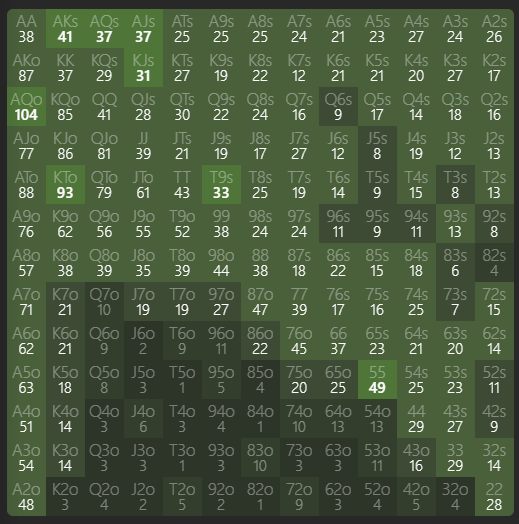 Button Position
Button Position
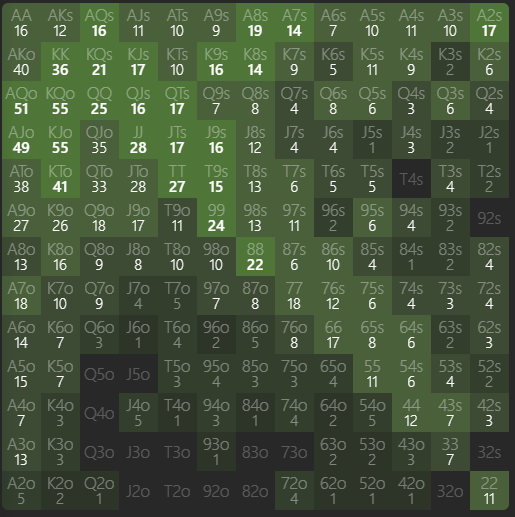 Small Blind Position
Small Blind Position
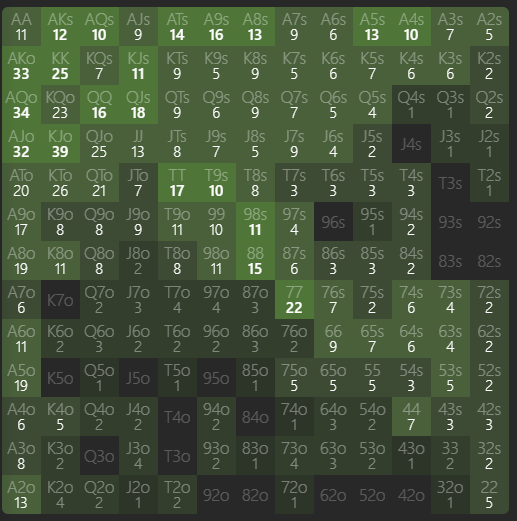 Big Blind Position
Big Blind Position
How can you use this information? Use these ranges as a reference point. If you face an open raise from a solid player, assume their range is very similar to what you see above. And if you consider yourself a solid player, you should open-raise with similar ranges too.
In Hand2Note, you can explore ranges for any spot — 3-bet, 4-bet, limp-raise, fold to 3-bet, call 3-bet, second barrel, float — the list is endless. If it happens in poker, you can study it.
# Frequently Asked Questions
# How can I get the Live Poker Database?
You can buy the Hand2Note Live Poker Database on our website. The Pro subscription doesn’t include the database, but when you buy it, you get 1 month of Pro access for free. After that, you can keep using the full database in Hand2Note — no subscription required.
# Is using this database legal?
Yes. We work with professional lawyers in North America to ensure compliance. Using this database is similar to collecting statistics from public sporting events — it’s fully lega










